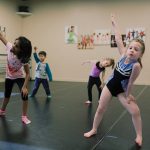In the late 1920’s it was decided that the importance of choreography in musical productions needed to change. The choreography needed to aid the plot and character development and enhance the spirit of the show. It was something that needed to be remembered and preserved. Choreography needed to get the critics’ attention. It was at this time that choreographers started taking the spotlight. They allowed the passion and emotion of the characters shine through in each dance they created. Here are some things to know before your first Musical Choreography.
A choreographer needs to work with dancers to interpret and develop ideas and transform them into a performance. Listed below are things that you should know about choreography and choreographing before you are involved in a musical performance.
Know the Music and the Show Inside-out
Get a copy of the Broadway soundtrack and DVD. Watch and listen several times so that you feel very comfortable with the music and the scenes. Study the music score, because it is important to know where the breaks, rests, and vocal lines are headed. Don’t just know the plot of the show, but know the entire script. Your dance numbers should help to enhance the story, so it is important that you understand the story.
It also helps to research the social dances of the time period of the show and use them as much as you can. Take anything you can get to make your job a little easier!
Communicate with the director and staff
As the choreographer, you must understand the director’s vision of the show. You must be on board with his style and pacing and be supportive of his/her ideas.
You will also be working closely with the music director, costume designer, set designer, and lighting designer to be sure that all movement is compatible with the musical cues, costuming, sets, and lighting.
Keep things simple
Keeping the choreography simple, especially when there is a large group on stage is very important. A lot of fancy and complex choreography will look messy with a bunch of people on stage. Rely on arm and head movements and very simple steps. Remember that sometimes less is more. A dance should tell a story, which can be done with a simple head turn, hair flip, or hand movement. Keep in mind the ability of your dancers and what their movements need to convey to the audience.
Be aware of the space
Think about the best way to use the stage space you have. Creating floor plans will help with this. Remember that it is boring to watch dancers lined up facing the front for every choreographed number. Change it up and have the actors interact with each other, move around, and use the set.
If you are stuck for ideas, don’t panic
Think outside the box. Use improvisation. Have the dancers improve for you and use their ideas. Or simply have them improve for the show, which will give it a different feel each performance.
If you are having trouble coming up with choreography ideas, break your typical movement mold. If you always move a certain way and create dances that are all similar, challenge yourself to go in the opposite direction from your normal habits.
For something different, mesh different dance genres together. For example: a hip-hop Nutcracker Ballet. You could try modern dance or ballet moves in musical theater for something different.
Be able to imagine the end result
What will the end result look like with the costumes, sets, and lighting? It is possible that your movements could be inspired in some way by these elements. Be a visionary!!
If you are interested in learning more about musical theater, check out our class at OSMD on 144th and Dodge in West Omaha! Go to our website for more information about registration! https://omahaschoolofmusicanddance.com/musical-theater-omaha-ne/



